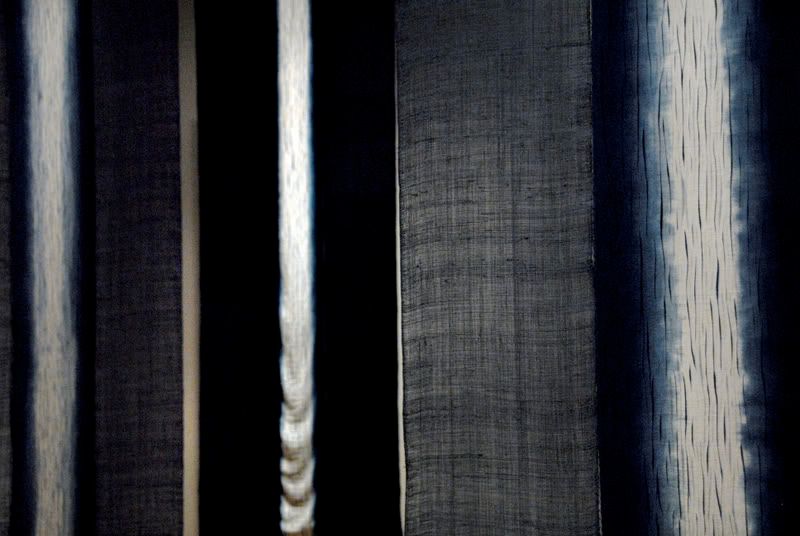Wednesday, September 24, 2008
Lumiar film
The script:
A boy is laying in bed for around 20-30 seconds. Suddenly he sits bolt upright slamming his head into the bar beneath the top bunk. He immediately collapses bank into a laying position where he lays for around 20-30 seconds.
Black and white
Mute
the Movie:
3 Tasks

The shot above is from Legally Blond…
1. It appears that the woman in black is introducing the woman in pink to a character off screen to the left of the camera.
2. In this picture we roughly assume the view of the person who the two characters in frame are meeting or speaking to. Assuming there are only three people in this interaction there are three different points of view.
3. It appears they are meeting someone knew. Perhaps they are about to enter a meeting or an appointment. The woman in black seems to be a guide or at least seems to be guiding the woman in pink. The woman in black may leave after introductions are made.
4. The woman in pink is obviously extremely excited to be in the situation or to meet the person she is being introduced to. The woman in black is a humorous contrast with a serious yet “why me” look on her face. However, her face also hints that she is knowingly oblivious to the flamboyant nature of the other woman.
5. They both seem to have the same emotional reaction. However, their different characters display this reaction in radically different ways. One reserved and the other extravagant and flamboyant.
Script…
B: “This is Mary she’s the newest member of the team. She will be joining the case in full force as soon as she finishes reading the briefings.”
P: “Actually I’ve like already finished reading the briefings! Like super innocent if you ask me.”
B: “What? YOU’ve finished reading the briefing? It was almost four hundred pages long! I only gave it to you this morning.”
P: “I know! Im super sorry! Like this guy called and I ended up talking to him on the phone for like three hours! I promise I wont take this long again!”
B: “Uhh, good… Anyway, this is Mary she’s the newest member of the team an-..”
P: “Im super excited to be on board with this! I cant wait to work with all you fab peeps!”
B: “and apparently she can get to work with you right away…”
P: “like thanks so much miss B! Lets do lunch like super soon!”
B: “I can’t wait…”
P: “Luv U!”
Question #2
Scene-
The Big Lebowski- Over the line
While this dialogue between Walter and “Smokey” follows a linier and coherent timeline the director makes great use of cuts to keep the fluidity of the scene intact.
The camera bounces back and forth between the characters Smokey and Walter. In the beginning of the scene Smokey is far from the camera and Walter. However, as the scene progresses he moves in toward the camera. His movement stays constant whether the camera is on him or not. His movement is implied and not directly shown. However, the viewer knows it takes place despite it being off frame. For example when the camera cuts from Smokey to Walter, and back to Smokey he is closer than he was in the previous frame. This creates the illusion that the scene is progressing at a normal rate. Also the pans of the camera move with the camera and do not halt even when the shot shifts to Walter. This also creates the illusion of movement. Also the camera never leaves one side of the 180* line drawn between the two characters. The cuts become more rapid and tighter as the tension in the scene heightens. This gives an extra element of tension. The choppiness is broken by a steady long shot of the entire situation, which essentially serves as a period at the end of the situational sentence.
Question #3
Movie-Titanic
1. Aside from the obvious (Garb, language, etc) the movie Titanic is a strong display of the mentality of the time: Progress for the sake of progress. Form and function gave way to grandeur and unchecked egotism. Titanic portrays this mentality through the actions of the characters.
2. The main historical group portrayed in titanic is the British. Specifically the wealthy upper class. The film itself depicts these bourgeoisies in a negative accusatory light, it does not simply let their actions make these accusations.
3. The political and social repercussions immediately after the tragedy. Or even a more macro look at the event rather than simply the focus on the lovers.
4. In order to appeal to a wider audience. (Film making is a business at the end of the day) Also a more coherent story line.
5. The film gives an accurate technical depiction of the events. And a realistic depiction of the human emotions during the sinking. However, it should not be viewed as a scientific document in the least.
Tuesday, September 23, 2008
papers...Papers....PAPERS!!!

Felix Penzarella
Prof. Kimberly R
9/23/08
Visual Literacy
Blue
The exhibit “Blue” was very appealing for various reasons. While it gave an informed history of the color indigo and the plant it is derived from, this was not the main attraction. Instead, the wide range of industries and mediums that make effective use of the blue tone is what was truly amazing.
The first and arguably most recognized use of indigo (as displayed at the exhibit) was blue jeans. While this seems obvious and mundane, it played a key roll in the exhibit as a contrast for the other more exotic uses. The use of blue in our clothing is the most modern culturally rooted example of blue and thus served as an anchor for the color when viewed in more exotic mediums later on in the museum.
While the jeans seemingly lack artistic value or merit, other examples of indigo certainly do not. The primal yet intricate pre-Columbian native weavings, which depict animals, are amazing in their detail. This is particularly impressive considering the tools they used to create the weavings were primitive at best.
The native weavings and primitive artwork stands in stark contrast with some of the larger more exciting pieces in the exhibit. The work of Japanese artist, Hiroyuki Shindo was particularly impressive. His massive installation pieces used symmetry, balance, various lines, and even interesting contrasts to convey the mood that his pieces intended.
The color blue inherently invokes a calm, collected, and cool feeling. The Japanese artist built upon this trait to construct his massive instillation piece. Hanging cloth is always moving slightly due to air movement, while large balls of blue twine lay seemingly askew on the ground. This contrast is between the solid spheres and the fluid drapes and it creates a sense of tranquility, calm, and balance.
Other pieces in the exhibit included a large box constructed with cloth that was intended as a tea drinking room, a wall hanging with intricate and elaborate designs, and a set with a chair contrasted against a fluid blue cloth backdrop. While all these pieces made effective use of the color blue and its inherent calm provoking tones, none compared to the deep psychedelic effect that Hiroyuki Shindo’s piece evoked.
Overall the exhibit was very interesting. While I have always been aware that blue evokes a feeling of calm. The exhibit made that feeling more real than ever before. From the flower to the tapestry “Blue” showed blue in a light I have never before seen. The exhibit granted me a new appreciation for the color, which I can only hope to emulate in my own art.
A photograph that I took at the exhibit of Hiroyuki Shindo’s piece is above.
Wednesday, September 10, 2008
Realism
Russian Ark: The Reality of History
The film Russkiy Kovcheg is not only one of the greatest realist films I have ever seen, but is also one of the greatest feature length films I have been able to enjoy. Directed in 2002 by Aleksandr Sokurov Russkiy Kovcheg is widely regarded as one of the most technically impressive and innovative films ever made.
The words Russkiy Kovcheg are Russian for “Russian Arc”, a title that is arguably more important to the film than any line of dialogue it contains. However, it is not the dialogue that makes this film so notable. Instead it is the cinematography that dominates the viewers mind. The entire movie is filmed inside of the Russian State Hermitage Museum and the shots that are created there in are absolutely breath taking. However, the most amazing thing about the shots are not their crazy camera angles or “Hitchcockian tricks”. Instead the fact that there is only one shot that makes this movie so impressive.
The entire ninety minute film was shot in one continues take. The cameraman, Tilman Buttner, operated a steadicam and walked through the entire museum shooting the scenes along the way. In total there were over two thousand actors and almost a thousand more crewmembers. It is to date the longest single shot ever taken in a feature length film.
The story itself is very strange. An unnamed main character that is voiced by the director makes his way through the Russian State Hermitage Museum and along his way witnesses three hundred years of Russian History. The two thousand cast members who are dressed in garb reflecting their respective time period reenact significant and at times obscure moments from Saint Petersburg’s vast History.
The film is an extremely patriotic tribute to Russian History and is at times hard to understand or relate to. However, the sheer scale and craftsmanship that is Russian Ark is more than enough to blow away cynicism.
The realist element of the film is very strange. Unlike many realist works the techniques employed may be seen as avant-garde, however, the film as a whole bares very little resemblance to other pieces in the same category. It does not have an “art film” feel to it; in fact the cinematography is so strong it might be viewed as somewhat commercial or “mainstream”.
The realist element of Russian Ark truly shines in the story in conjunction with the cinematographic technique. The story is that of Russia. The actors are simply the Russian people and though the film does show key figures such as Kathrin the great, it also shows the Russian serfs and peasants in an equally significant manor. Beside the main character through who’s eyes we are watching the film unfold and his traveling companion “The European”, no one character stands out as more or less important than anyone else.
The one continuous shot technique is very effective in making this a realist piece. Without it the film would lose its strong sense of continuity and become simply hard to watch. The single long shot also is a narrative device in and of itself. It represents the perseverance and continuum of Russian History.
Another very realist element of Russian Ark is its focus on people. While the film is shot in one of the greatest Russian buildings ever constructed it only servers as a backdrop for the people of Russia to act out they’re History. It is Russian people portraying Russian History. No special effects or narration, the story is told through very basic dialogue and visuals. The energy of the film comes from the people’s interaction with their History.
In conclusion I would call Russian Ark or Russkiy Kovcheg an extremely successful film. From cinematic quality to emotional drive the film delivers strong. As a realist piece it is also extremely successful and through one of the most challenging cinematic effects it brings realist film making to another level. While the film seems slow at times the lulls serve their own purpose of “proving reality” another realist technique. Russian Ark is simply put, “breathtaking”.